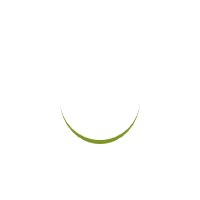The latest report by GenerEOS shows that EOS is highly energy efficient in comparison to Bitcoin (BTC) and Ethereum (ETH). It means that EOS requires less energy consumption against the other two energy guzzlers.
GenerEOS, which is an EOS block producer candidate, performed the entire calculation while taking energy statistics from Digiconomist. However, GenerEOS calculated its own EOS data.
Energy Consumption Data for Bitcoin and Ethereum
The story about Bitcoin’s huge energy demand is nothing new! This is because of its Proof-of-Work (PoW) algorithm demanding high-end energy consuming hardware to solve complex mathematical algorithms. The GenerEOS report shows that Bitcoin consumes 73.1 TWh of power annually. This is “the same amount of electricity as the nation of Argentina.” The data shows that the energy consumption of Bitcoin has increased over the last year.
On the other hand, Ethereum consumes nearly 18.96 TWh of energy per year. Even though Ethereum also uses the PoW consensus mechanism, it needs much less energy to confirm transactions in comparison to Bitcoin.
Ethereum developers are working on the Casper update to make mining obsolete by shifting to a Proof-of-Stake (PoS) algorithm. This will bring Ethereum’s energy demands even lower.
EOS Energy Consumption Data
The EOS energy consumption data shows that it is drastically less in comparison to Bitcoin and Ethereum. EOS uses 0.0011 TWh of energy per year, nearly about 66,500 times less than Bitcoin.
According to GenerEOS, the blockchain’s low energy consumption is due to its delegated Proof-of-Stake (PoS) implementation. DPoS doesn’t involve mining to add new blocks to the EOS blockchain network. Rather, a certain number of elected block producers are responsible to confirm the blocks. This eliminates the use of an “arms race” for mining which requires miners to use power-intensive, high-end hardware. MyCryptoPedia offers a better explanation of the working of DPoS.
“With DPoS, witnesses are given a specific time schedule to do so. Therefore, the intense competition for the addition of the next block becomes impractical, which in turn reduces the energy costs for adding a single block when compared to PoW. Specialized computers known as, ASICs, are no longer necessary in-order to solve complex mathematical problems needed for PoW.”
However, EOS is not the only one to demand significantly less energy. According to the data presented by Stanford and Stockholm University, Ripple consumes literally half the energy annually, i.e. only 0.0005361 TWh, in comparison to EOS.
Risk Disclosure
This article should not be taken as, and is not intended to provide, investment advice. Users are ultimately responsible for the investment decisions he/she/it makes based on this information. It is your responsibility to review, analyze and verify any content/information before relying on them. Trading is a highly risky activity. Do consult your financial adviser before making any decision. Please conduct your thorough research before investing in any cryptocurrency and read our full disclaimer.
Join our Telegram Group To Stay Up To Date With Crypto News


